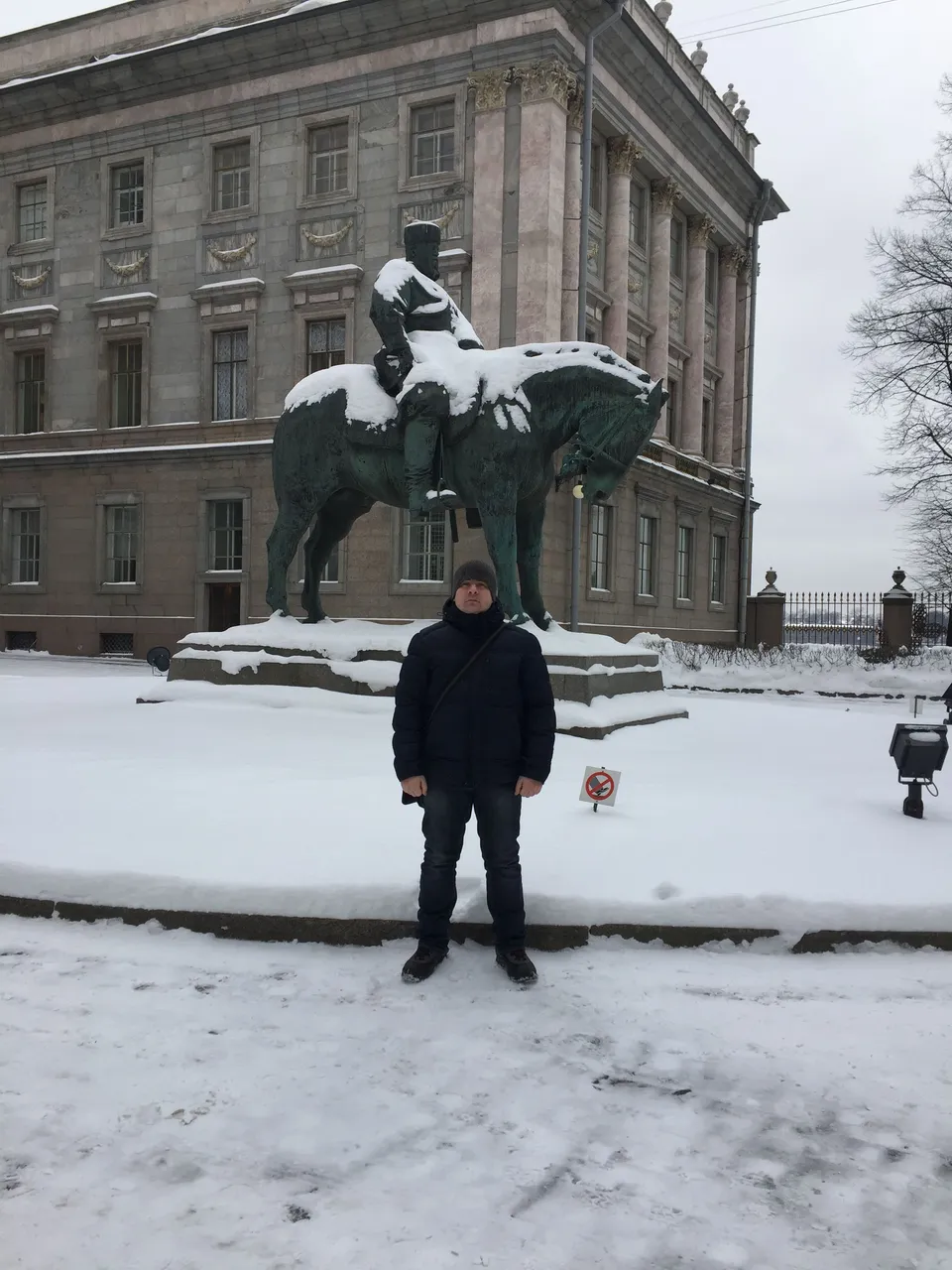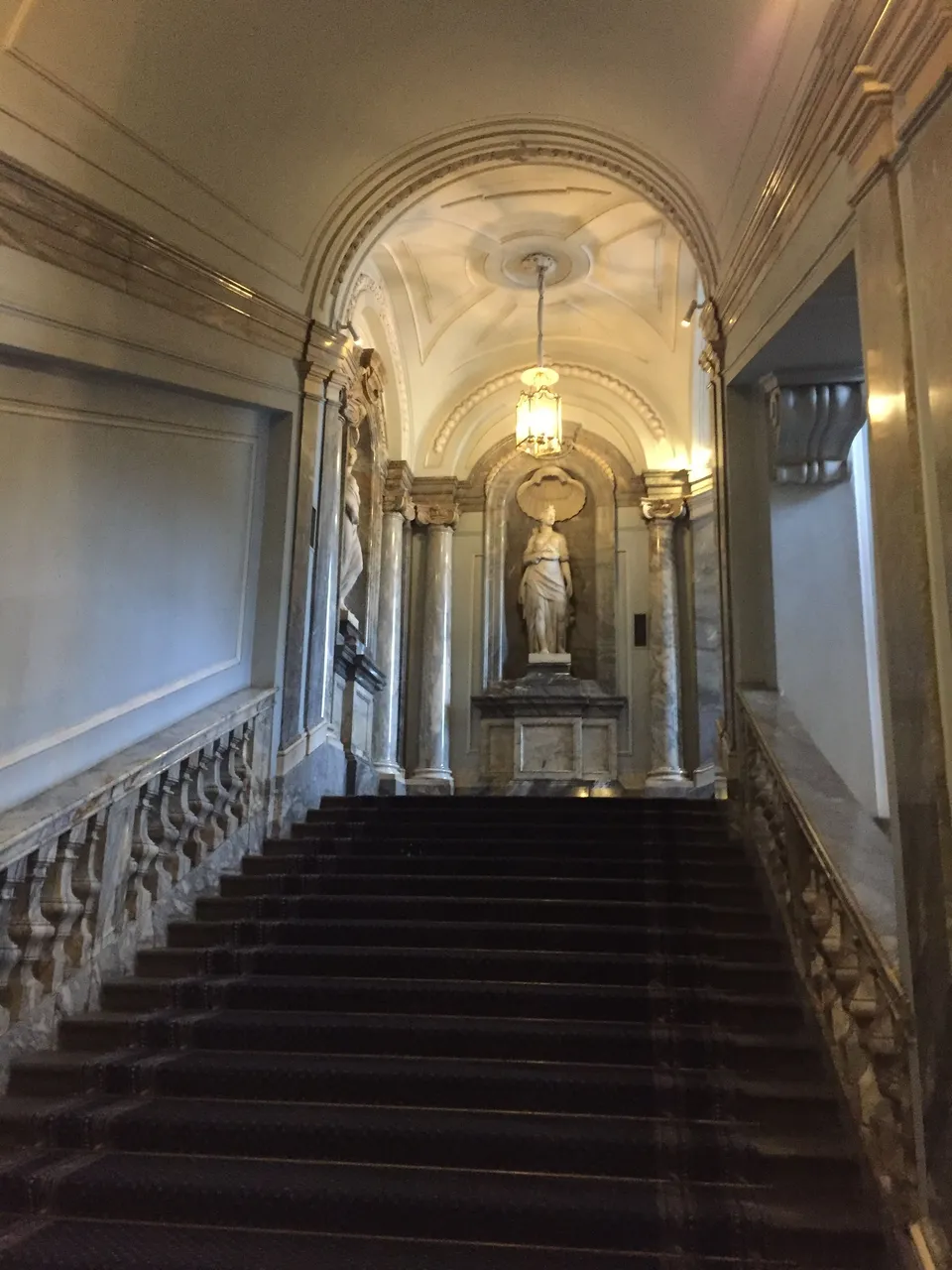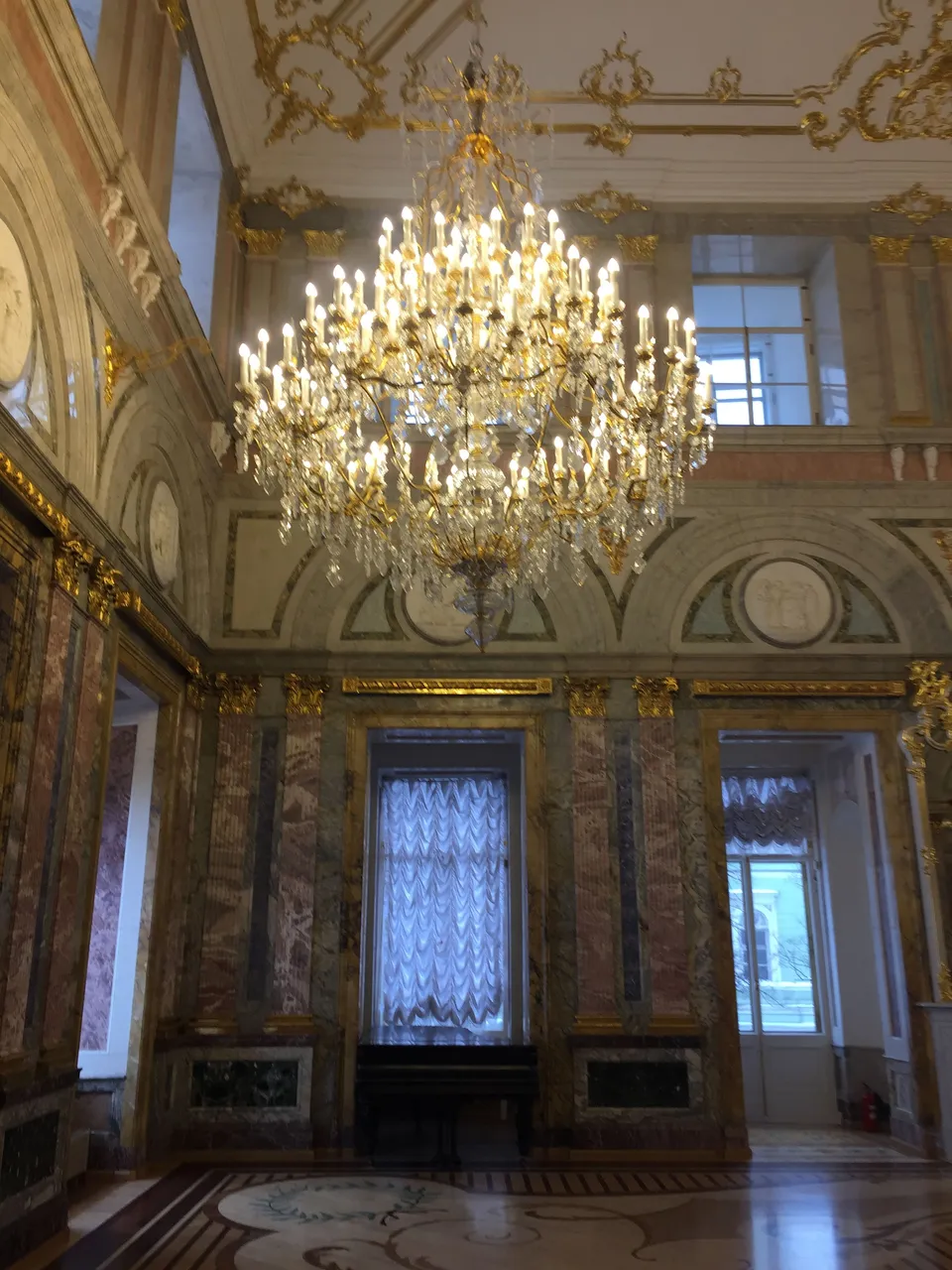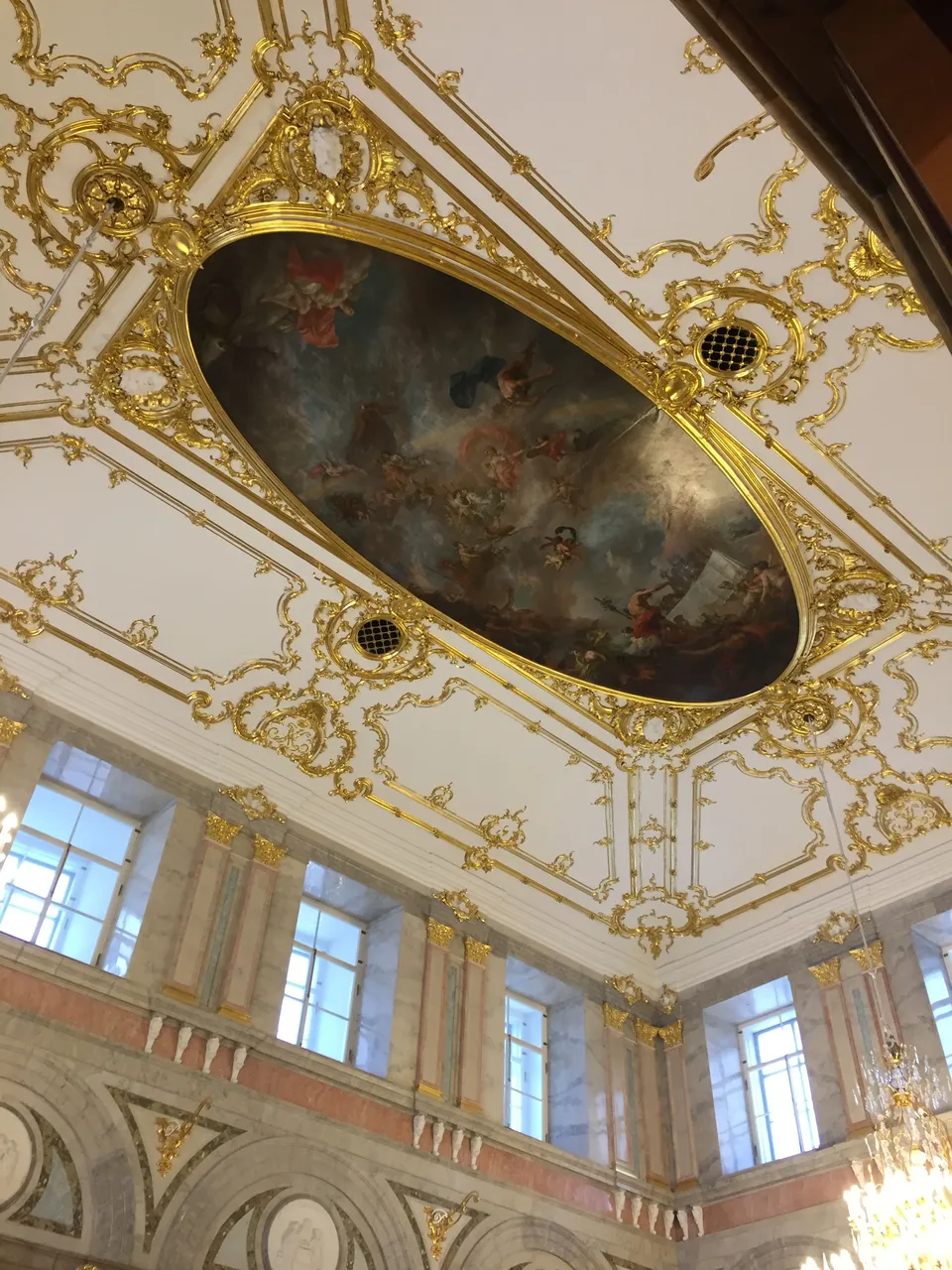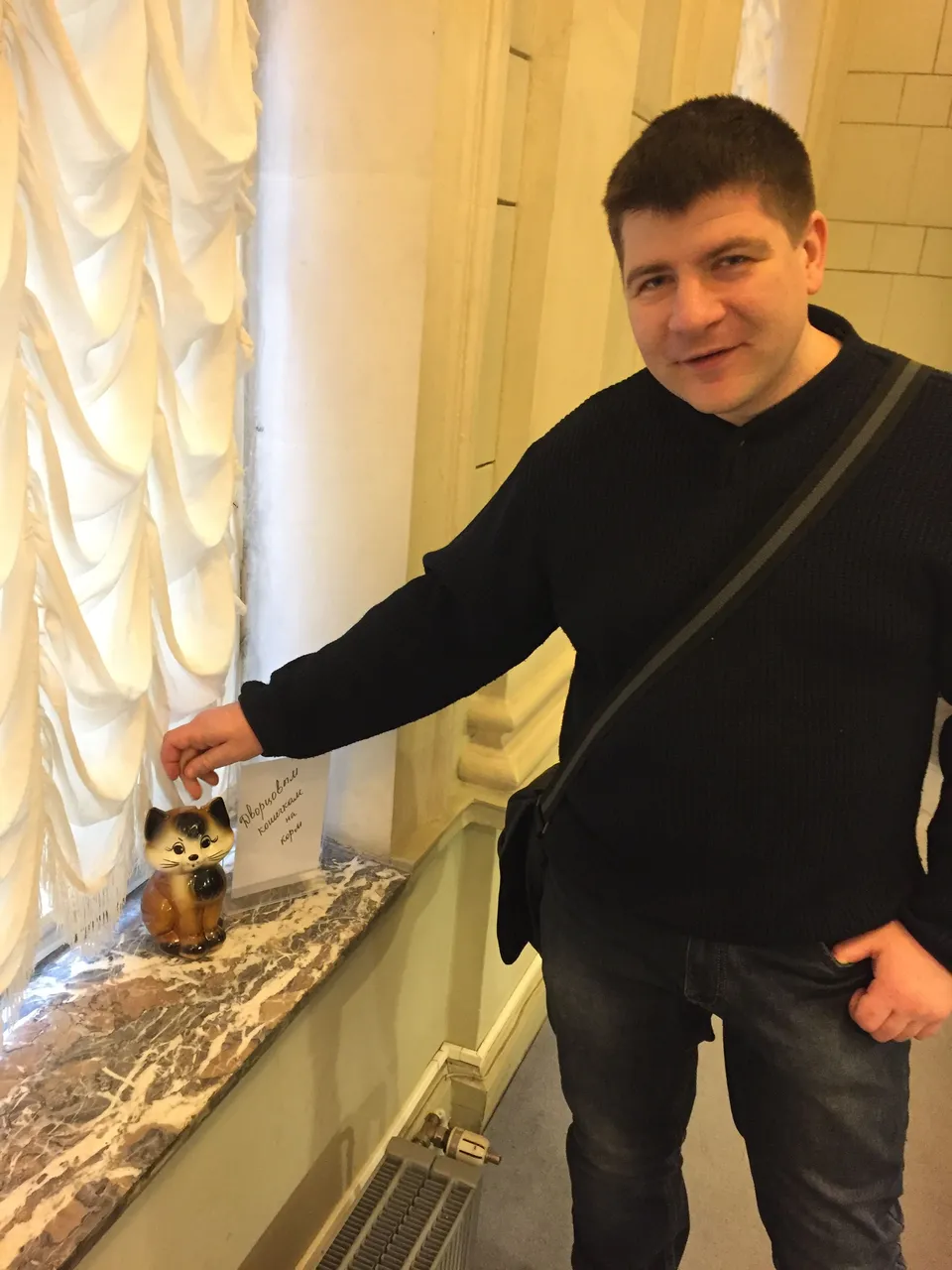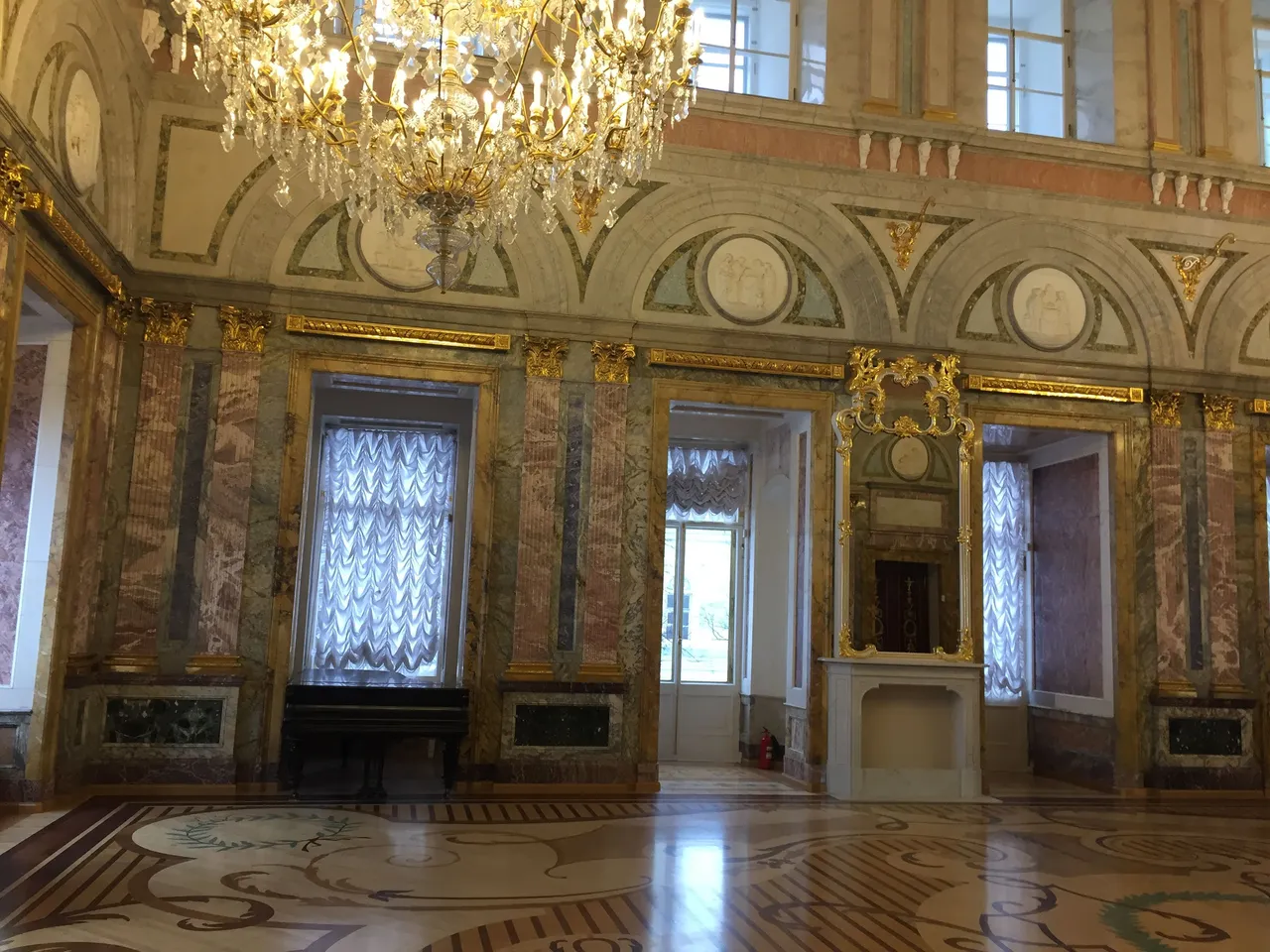I‘ve been living in St.Petersburg for my entire life, but there are many places in that city that I have never visited. One of them is a Marble Palace. It is located on Dvortsovaya embankment, just a few steps away from the famous Hermitage.
Today I went to Marble Palace and I want to share my impressions with you. The palace has quite a history.
The palace was built by Count Grigory Orlov, the favorite of Empress Catherine the Great and the most powerful Russian nobleman of the 1760s. Construction started in 1768 to designs by Antonio Rinaldi.
The palace takes its name from its opulent decoration in a wide variety of polychrome marbles. A rough-grained Finnish granite on the ground floor is in subtle contrast to polished pink Karelian marble of the pilasters and white Urals marble of capitals and festoons. Panels of veined bluish gray Urals marble separate the floors, while Tallinn dolomite was employed for ornamental urns. In all, 32 disparate shades of marble were used to decorate the palace.
The plan of the edifice is trapezoidal: each of its four facades, though strictly symmetrical, has a different design. One of the facades conceals a recessed courtyard, where an armored car employed by Lenin during the October Revolution used to be mounted on display between 1937 and 1992. Nowadays, the court is dominated by a sturdy equestrian statue of Alexander III of Russia, the most famous work of sculptor Paolo Troubetzkoy; formerly it graced a square before the Moscow Railway Station.
During the Soviet era, the palace successively housed the Ministry of Labour (1917–19), the Academy of Material Culture (1919–36), and, most notably, the main local branch of the Moscow-based Central (i.e. National) Lenin Museum (1937–91) with sub-branches across Leningrad in Lenin's memorial apartments all over the city - the places where he lived or stayed during his various periods in what was then Saint Petersburg.
Currently, the palace accommodates permanent exhibitions of the Russian State Museum, notably "Foreign Artists in Russia (18th and 19th centuries)" and the "Peter LudwigMuseum at the Russian Museum", featuring canvases by Andy Warhol and other Pop Art idols.
